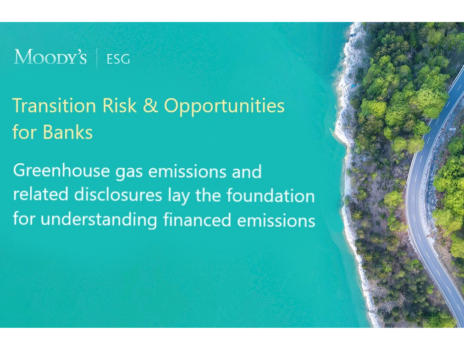

The science is clear. To limit global warming to below 1.5°C and avoid a surge in adverse weather events and a rewiring of the climate system, we must act fast and in concert with transition risk alignment. In April 2022, the Intergovernmental Panel on Climate Change (IPCC) underlined that, on our current trajectory, the world is set to surpass the 1.5°C level by 2040. Sharp reductions in carbon emissions from now on will be needed to prevent the worst environmental outcomes.
Backed by a wealth of scientific evidence, the political and moral pressure to decarbonise our economies is immense. While reduced physical risk will lead to broad economic benefits globally and the necessary industrial changes that can facilitate decarbonisation and create new opportunities for investors, many investment portfolios will still face an uncertain future.
These business-related risks and opportunities that pertain to the shift towards a low-carbon future are known as transition risks (or transition risk alignment). They may include policy and regulatory risks, technological risks, market risks, reputational risks and legal risks; and these are typically interrelated.
Transition risk is not linear
There is no ‘one-solution-fits-all’ approach to calculating transition risk alignment, according to Andrew Grant, VP of climate solutions at Moody’s; it is highly dependent on multiple factors that are specific to the companies and sectors to which an investor has exposure.
But there are ways to make sense of the chaos. Tracking carbon emissions data, for example, is one area that can support an investor in this effort. Take the banking and asset management sector. Moody’s calculates it finances around 700 times more greenhouse gas (GHG) emissions than its own Scope 1 and 2 numbers.
The extent of financed emissions at such institutions illustrates the huge transition risks buried within the financial system.
Moody’s has warned lenders: “Exposure to high [GHG] emitting sectors that are sensitive to regulation, or underprepared, could overextend banks’ positions on corporate lending activities and leave banks exposed to financial risk. Banks can be particularly vulnerable to transition risks due to their significant balance sheet leverage.”
For example, internal carbon pricing is the practice of assigning a notional financial cost to greenhouse gas emissions and allows companies one way of assessing and integrating climate transition risk into business decisions. While it doesn’t capture all transition risks in all sectors – and implementation practices vary – it can provide a useful proxy. However, very few of the world’s biggest greenhouse gas emitters use an internal carbon price – or, for that matter, apply Task Force on Climate-Related Financial Disclosures (TCFD) reporting, making it difficult to assess how resilient these sectors might be to carbon price shocks.
Even when a picture is clearer, transition risk alignment data doesn’t remain static for long. The numbers of net-zero commitments by governments, companies and financial institutions are growing by the day, while investors are increasingly demanding more forward-looking metrics to improve their ability to project transition pathways, driven in part by increased usage of TCFD reporting recommendations.
Those in need of support, Grant advises, can look to a comprehensive suite of Moody’s climate solutions to deepen their scenario planning. “We have a macro-economics team, for example, who can flesh out third-party climate scenarios such as those produced by the IEA or NGFS [Network for Greening the Financial System] projections, for example, providing a full suite of economic data on a geographically granular basis.”
Equally, Moody’s can deliver modelling around climate-adjusted probabilities of default. “Our teams can work using credit models and include transition factors. We can run integrated assessment models to get outputs for climate scenarios in terms of carbon prices, energy prices and so on, feed that through to our credit models and see what the implications are for outstanding credit,” says Grant.
Getting transition risk alignment right
Calculating climate transition risk alignment is just half the battle. Many investors are not only interested in the economic implications of the journey towards net-zero emissions but are also proactively committed to supporting that transition themselves. Again, this will usually mean through their portfolio decisions and attending to their own emissions.
Moody’s ESG Solutions team’s recently launched Temperature Alignment Data, which supports investors in assessing the transition risk alignment of portfolios with potential low-carbon pathways. The tool assesses the forward-looking trajectory of over 7,000 companies’ emissions based on their GHG emissions reduction targets.
Investors are now able to understand whether the ambition of corporate emissions targets matches what is required to reach net zero by 2050, thus keeping global temperature rise to 1.5°C.
“Say one of your portfolio companies is going to cut emissions by X percentage by Y date, how does that align with a given transition pathway for its sector, for example?” asks Grant.
Moody’s Temperature Alignment data sets for company commitments extend to 2050, but focus on the period to 2030, shining a spotlight on which companies are making an immediate effort to cut their emissions. Critical sectors such as automobiles and building materials are covered according to sector-specific pathways, allowing investors to calculate on a portfolio basis the trajectory of their combined investments.
Although results vary by sector, on average all are currently trending towards temperature rise alignment levels of above 2°C. Unsurprisingly, the energy sector is on the high end with an average temperature alignment of 3°C, and electric and gas utilities companies are presently on a 2.4°C trajectory. European companies lead the way, both in terms of the number and ambition of targets versus their US peers.
At present, only a limited number of companies disclose enough information to establish whether the ambition of corporate emissions targets matches what is required to reach net zero. Overall, 9% of the more than 7,000 companies in Moody’s assessment universe have set targets that can be quantified, and which run to 2030 or beyond. However, where required, Moody’s is able to make reasonable assumptions to fill in coverage gaps for companies without targets.
Start acting now on transition risk alignment
Despite the debate around how best to employ ESG data despite some current limitations, few will argue that it is wise to make business or investment decisions without considering climate concerns and how they will impact future operations and performance. The implications of transition risk alignment will be highly material, presenting an opportunity for those who dedicate effort to addressing these complexities to differentiate themselves and stay a step ahead of regulators.
Conversely, those who shy away from this through fear of the unknown or a lack of precise actionable data may find their customers and other stakeholders looking for alternatives, or wedded to assets with value that is already in decline.
For companies and investors committed to actively playing a role in aligning their operations and portfolios to a net-zero world – both for the sake of financial value and social impact – there are ways to start the process and build momentum.







